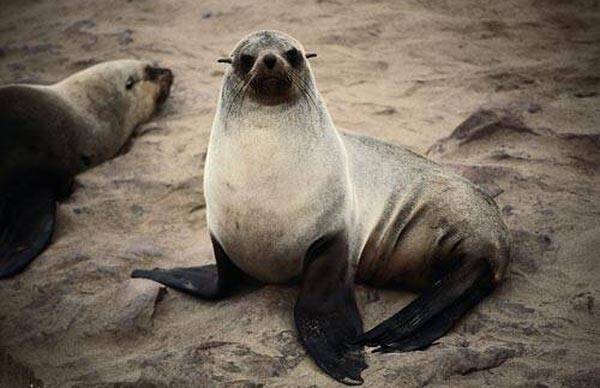Monachus tropicalis
IUCN
LCBasic Information
Scientific classification
- name:Monachus tropicalis
- Scientific Name:Monachus tropicalis ,Caribbean monk seal,West Indian monk seal
- Outline:Carnivora
- Family:Phocaea P.subfamily P.genus
Vital signs
- length:2-2.5m
- Weight:200kg and above
- lifetime:About 20 years
Feature
Slightly larger than an ordinary seal, it has a short and wide mouth and a high and round forehead. It is extinct.
Distribution and Habitat
Once distributed in the Caribbean
Appearance
The monk seal has thick black whiskers on its face and two big, bright black eyes. Monk seals are very smart and curious about new things. They are very friendly to humans. When they see people swimming nearby, they will curiously swim in front of the person, stare at the person's face for a while, and then swim away leisurely. Their swimming posture is very elegant, as if they don't use fins to paddle at all, just a slight shake of the body, and they can turn around in the water effortlessly. In addition to hunting, monk seals like to bask in the sun on secluded islands, often gathering together in dozens or hundreds.
Details
Caribbean monk seal, Monachus tropicalis (Gray, 1850) foreign name Caribbean monk seal, a seal of the genus Phocaeus in the family Phocidae.

Monk seals prefer warm tropical waters, and their body shape is more suitable for living in water than sea lions and walruses. Their hind limbs cannot bend forward, which is very important for movement in water. Monk seals have a smooth, almost streamlined body, which is very suitable for fast swimming and diving in water. Its sharp vision and hearing, coupled with its agility in the water, make it easier for it to catch all kinds of fish. On land, its movements are clumsy, and its limbs, which are good at swimming, can only serve as support, so it has to crawl slowly.
The Caribbean monk seal was first discovered during Columbus's second voyage in 1494, and its number exceeded 250,000 at its peak. However, due to human hunting and killing, it is difficult to find it again. In 1952, someone reported seeing a Caribbean monk seal between Jamaica and the Yucatan Peninsula in Mexico, which was confirmed to be the last time humans saw this endangered species. Wildlife experts investigated several reports of alleged sightings of the species over the past few decades, but ultimately confirmed that they were all other seal species. In 1967, the Caribbean monk seal was first listed as an endangered species.
In the 19th century, as the power of the countries mentioned above increased, they wanted to occupy more colonies, so more and more people came to the Caribbean. In order to obtain more seal oil and seal skins, these people started a new round of hunting. The beautiful beach instantly turned into a slaughterhouse, with the corpses of monk seals everywhere, and the blue sea water was dyed red from time to time. After the 20th century, with the continuous advancement of technology, humans began to use more advanced hunting tools, and the number of monk seals decreased day by day. However, humans did not realize this, and the greed for seal fur and seal oil eventually led to the extinction of this species.
Listed in Appendix I of CITES
Approved as a Class 2 protected aquatic wildlife in China on October 9, 2018








